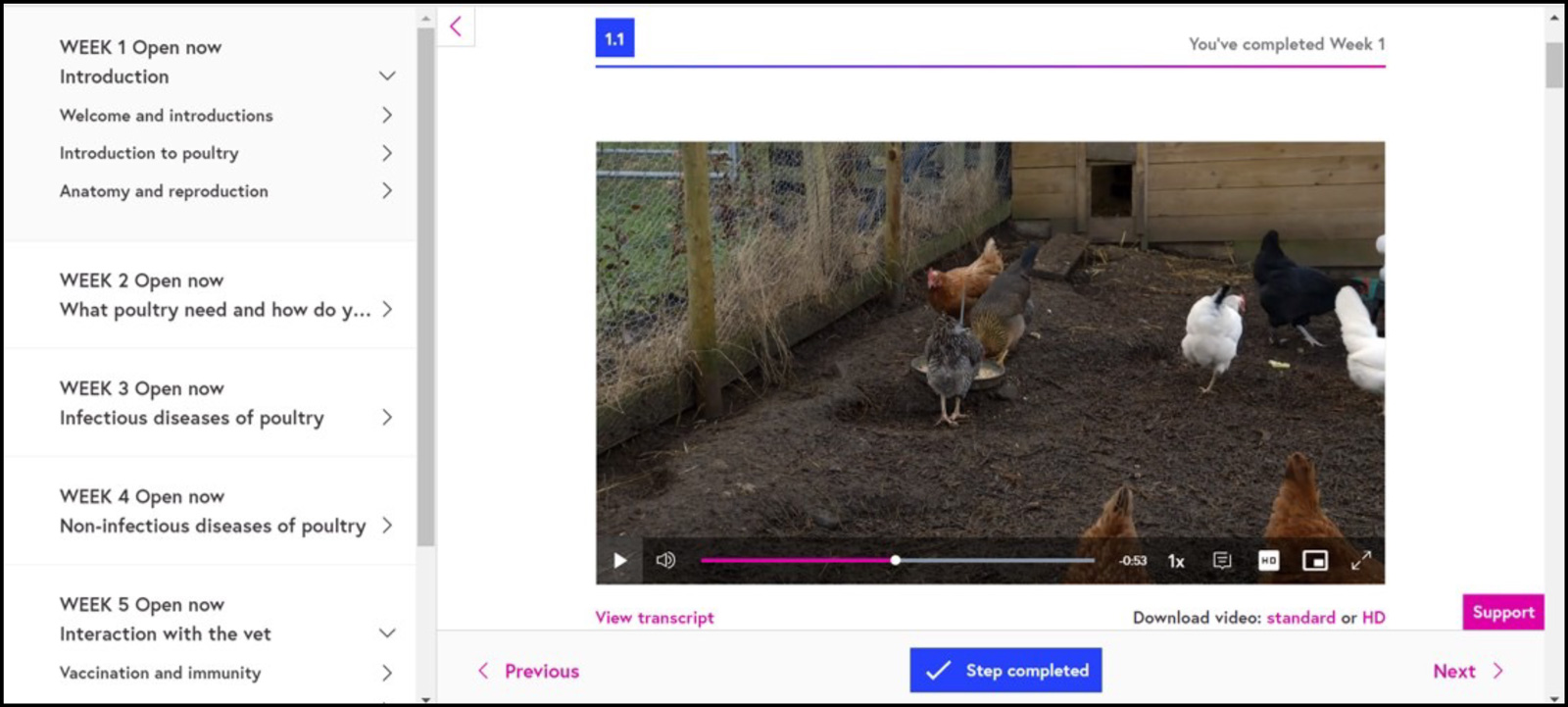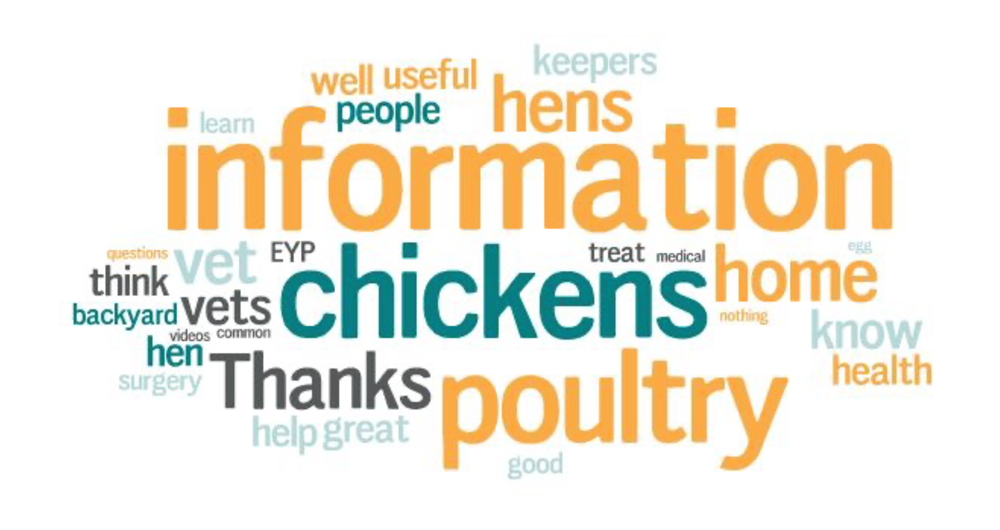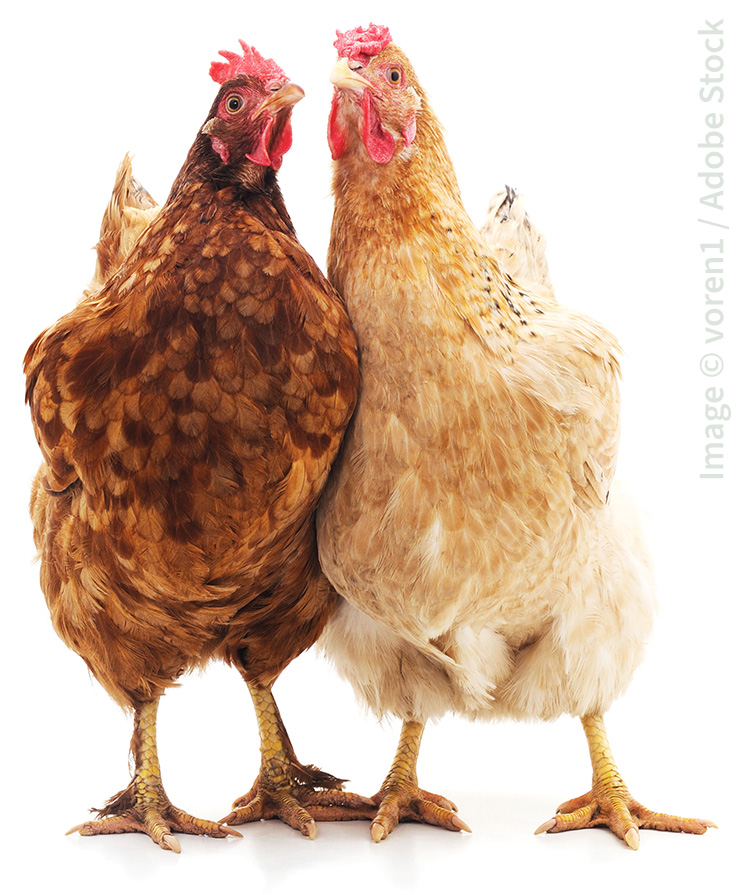12 Mar 2024
The authors highlight the various issues surrounding chicken owners’ access to basic clinical care.

Image © Jacqueline Anders / Adobe Stock
Julia Bennett, Jane Howorth, Gaynor Davies, Marcella Perversi, Paul Barrow, Mike Clark, Simon Barnett and Robert J Atterbury
Reduced veterinary staffing levels, the COVID pandemic and the unprecedented avian flu outbreak have highlighted historical gaps in knowledge about pet poultry. In 2022, the University of Nottingham and the British Hen Welfare Trust collaborated to produce a free online course to address this gap and to support the welfare of backyard birds.
In March 2022, Kodilinye-Sims and Royden issued an appeal in the pages of Vet Record : “We must improve our pet poultry services”1.
The picture they presented was stark: owners of pet poultry were struggling to access basic veterinary care, against a backdrop of reduced veterinary staffing levels, the effects of the COVID-19 pandemic and the UK’s largest-ever avian influenza (AI) outbreak2. Some of these issues are not new to the veterinary profession. Poultry medicine is a relatively neglected subject in veterinary curricula3,4 and where it is addressed there may be a focus on the commercial industry5,6.
However, backyard or “pet” poultry keepers in need of veterinary care will often turn to companion animal practitioners1,5,7, who may lack experience and confidence in approaching these cases. With UK law treating pet poultry as food-producing animals, selecting appropriate medicines can be confusing8, and similar concerns can arise around anaesthesia.
A UK study has suggested that, where companion animal veterinarians feel unable to effectively treat pet poultry, this may contribute to higher rates of euthanasia7.
Poultry keepers themselves may not detect health conditions until they become severe7, and may not sufficiently understand the correct husbandry1 and legal status6 of the birds they keep, highlighting the importance of client education.
With the ongoing impact of reduced staffing levels in veterinary practices, a need for accessible training was identified.
Following the appeal in the Vet Record, “Poultry Health”, a massive open online course (MOOC), was launched as a free-to-access, six-week course on the FutureLearn platform9.
The Poultry Health MOOC is a collaboration between the University of Nottingham and the British Hen Welfare Trust (BHWT), aimed at veterinary surgeons, nurses and students, as well as poultry keepers, to improve their knowledge and ultimately the welfare of pet poultry.
Given the learning needs identified by the veterinary community, the primary target audience for the MOOC is companion animal vets who may need to treat pet poultry, as well as veterinary nurses and students with an interest in the topic.
However, as an open online course, access to the teaching is unrestricted. With multiple reports of poultry keepers seeking information about their flocks online and on social media1,6,10, it was anticipated that non-veterinary users would be likely to join, and that potential benefits to owner education existed in addressing these participants in the course content.
The collaboration between the University of Nottingham and the BHWT brought together contributors from research and academia, as well as experienced poultry keepers and veterinary general practitioners. The MOOC employs a variety of multimedia teaching methods, with videos and graphics, as well as written articles and weekly formative quizzes to review learning (Figure 1). Each activity includes a discussion board where participants can ask questions, share their experiences and offer feedback, which has been invaluable in developing plans for future resources.

The course is delivered across six weeks, with each week of content dedicated to broad subject areas including husbandry, disease and veterinary interactions with pet poultry (Table 1); topics within these areas are then covered in more detail.
| Table 1. Course content weeks by content area | |
|---|---|
| Week of course | Taught content area |
| 1 | Introduction to poultry |
| 2 | What poultry need and how do you handle them correctly? |
| 3 | Infectious diseases of poultry |
| 4 | Non-infectious diseases of poultry |
| 5 | Interaction with the vet |
| 6 | Surgical case studies |
| Emphasised throughout the course is that options are available to improve welfare and relieve suffering; as previous studies and commentary have indicated, veterinary surgeons do not need to be poultry experts to provide a basic level of support to birds and their keepers1,5,8. The aim of the Poultry Health massive open online course is to empower veterinary practitioners to provide a level of care that will improve the welfare of pet poultry. | |
Teaching activities focus on potential gaps in veterinary knowledge such as those previously identified: clinical assessment of poultry, common health conditions and the provision of first aid and emergency care, including humane euthanasia. Case studies explore treatment options for medical and surgical presentations.
Another key knowledge area addressed on the course is the use of medication on the prescribing cascade for veterinary medicines11 – a complex issue when poultry are increasingly treated as pets, but remain legally classed as livestock, and where their eggs may be used for human consumption.
Antimicrobial overuse in pet poultry is a recognised concern – particularly that of critically important antibiotics such as fluoroquinolones7,8. The course aims to clarify issues around the use of the cascade, informed owner consent and communication on withdrawal times.
In the first 12 months after its launch, the BHWT Poultry Health course website recorded 8,450 visitors from 100 countries across the globe and all six inhabited continents. A significant number of these visitors converted into enrolments, with more than 50% of total enrolments (1,234) originating there. Enrolments grew from 441 in the days after launch in May 2022 to 2,240 by May 2023. As an online course, social media was key to spreading the word and boosting enrolment. Social media posts at the time of launch reached 4,859 people on Instagram and 9,573 people on Facebook.
A follow-up post on Facebook one month after launch surpassed this, reaching 37,922 people, which translated into a spike in visitors to the BHWT webpage.
Feedback from participants has been largely positive. Of 165 respondents to a post-course survey, 156 (94%) felt that they had gained new knowledge. By the end of the course, 115 respondents (69%) reported that they had shared that knowledge, and 88 (53%) reported that they had already applied their learning. Free text comments revealed some common themes (Figure 2): the free access to the course was received warmly, while other positive responses addressed the usefulness of the information and how it was presented.

Themes for improvement included a desire for more detailed coverage of specific disease conditions, such as egg yolk peritonitis and sour crop, and that the inclusion of veterinary-specific and keeper-appropriate content in a single course presented challenges to both audiences. While 89% of those responding to the end of course survey felt teaching had matched or exceeded their expectations, comments revealed that some lay poultry keepers struggled to understand content directed at the veterinary community.
Similarly, some veterinary participants suggested that, in attempting to be inclusive of lay poultry keepers, some of the course’s clinical aims lost focus.
Improving the welfare of pet poultry is not only about educating the veterinary community, but clients, as well1,6,7,8. End of course survey comments from poultry keepers alluded to the disparate nature of information available online, and the need for evidence-based education resources such as the MOOC.

Following this and the feedback mentioned, new resources are in development that will split teaching into separate veterinary and poultry keeper streams. The University of Nottingham and University of Surrey teams, together with the Pirbright Institute, have produced a veterinary guide to backyard poultry13, which acts as a companion to the MOOC for veterinary practitioners, and a new veterinary-specific course is being developed to serve the continuing professional development needs of practitioners.
The BHWT, in collaboration with Poultry DVM based in America, has recently launched the Poultry Vet Guide (PVG) at www.poultryvetguide.com14 as a comprehensive, evidence-based online resource for veterinary practitioners, providing both diagnostics and treatment solutions; the guide will enable non-specialist practitioners to confidently manage poultry cases.
The PVG is a peer-reviewed facility which will be regularly updated with new content. For poultry keepers, the BHWT continues to provide extensive guidance on its website12.
The partnership between the University of Nottingham and the BHWT has been central to this project, with input from academics and clinicians, and from keepers with extensive practical experience of rehoming hens.
Making the most of this partnership for the development of future resources is key to bridging gaps in knowledge for both audiences, to advance the welfare of pet poultry.